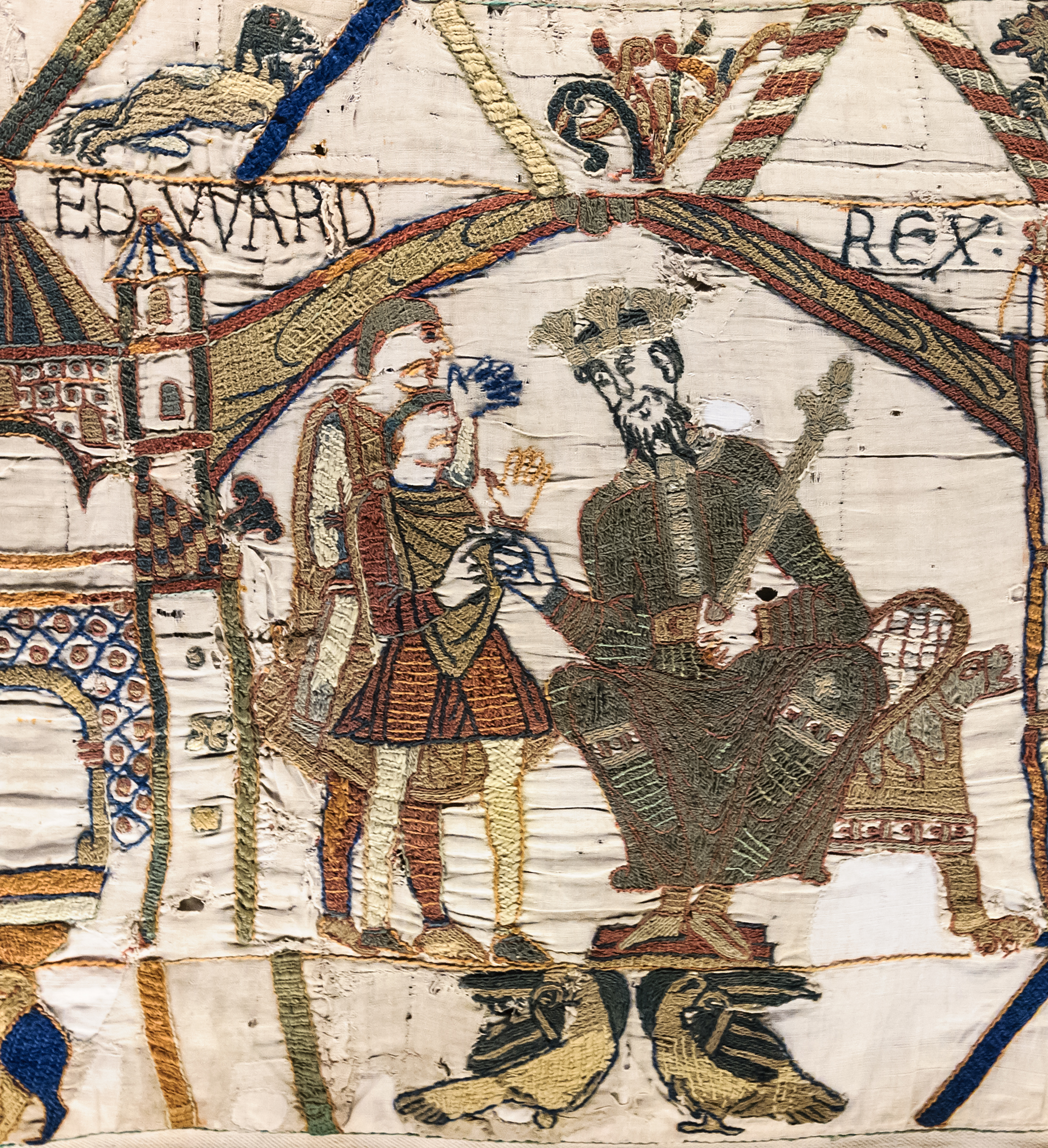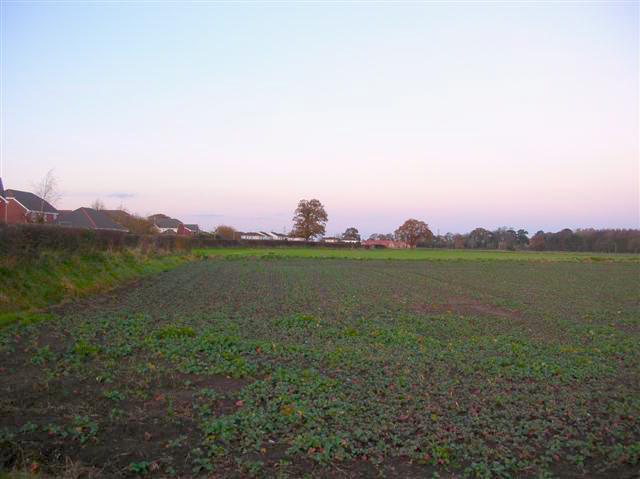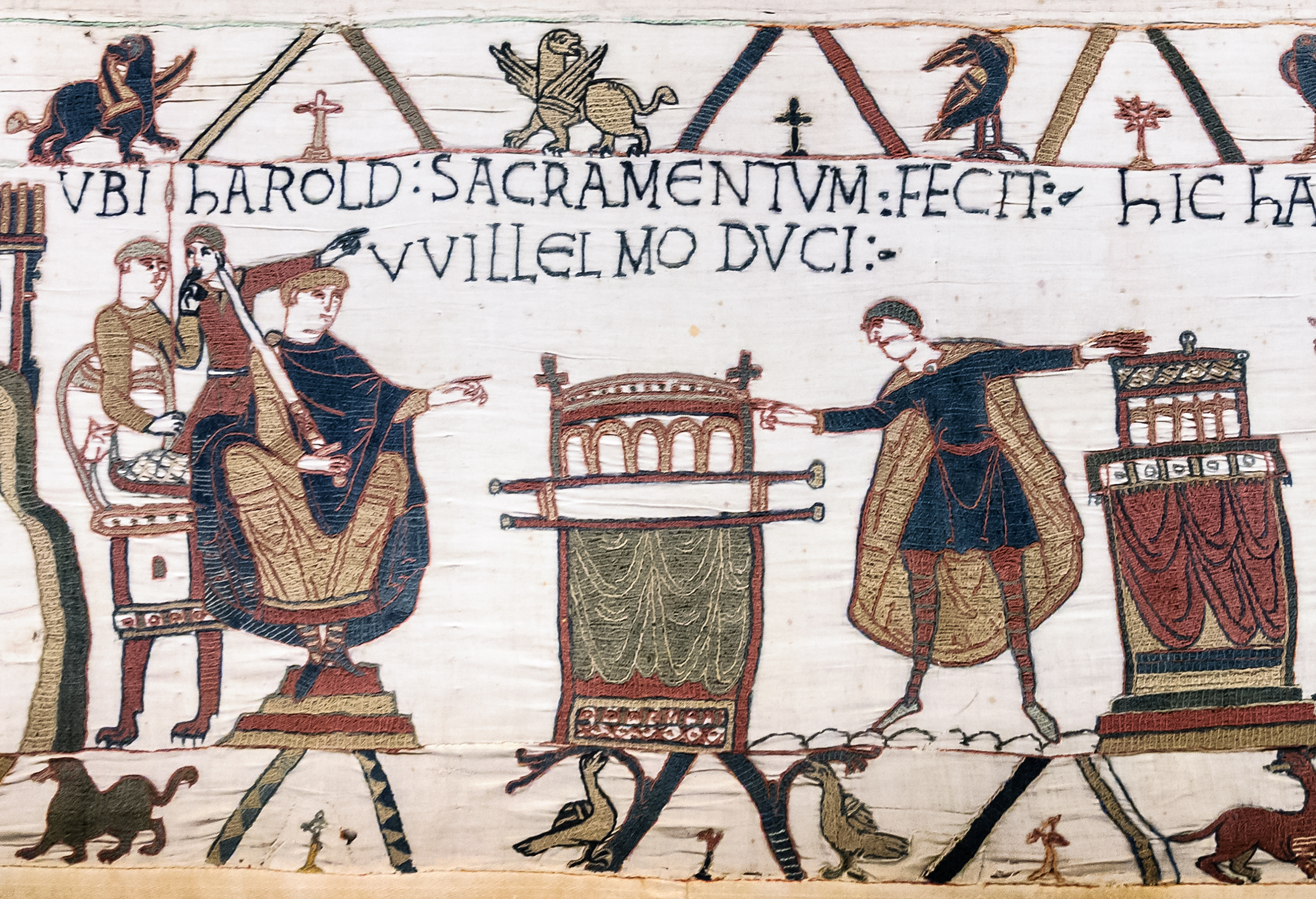|
Gyrth
Gyrth Godwinson (Old English: ''Gyrð Godƿinson''; 1032 – 14 October 1066) was the fourth son of Earl Godwin, and thus a younger brother of Harold Godwinson. He went with his eldest brother Sweyn into exile to Flanders in 1051, but unlike Sweyn he was able to return with the rest of the clan the following year. Along with his brothers Harold and Tostig, Gyrth was present at his father's death-bed. Biography Following the death of his father in April 1053, the Godwinsons managed to retain their hold on England. Harold inherited the Earldom of Wessex and became second in power only to the king. Gyrth was made Earl of East Anglia, Cambridgeshire and Oxfordshire some time between 1055 and 1057. Together with his brother Leofwine's Earldoms of Kent, Essex, Middlesex, Hertford, Surrey and probably Buckinghamshire the Godwinsons now controlled the entirety of East England. According to Orderic Vitalis and William of Malmesbury, Gyrth tried (ineffectually) to prevent Harold from ... [...More Info...] [...Related Items...] OR: [Wikipedia] [Google] [Baidu] |
Battle Of Hastings
The Battle of Hastings was fought on 14 October 1066 between the Norman-French army of William, Duke of Normandy, and an English army under the Anglo-Saxon King Harold Godwinson, beginning the Norman Conquest of England. It took place approximately northwest of Hastings, close to the present-day town of Battle, East Sussex, and was a decisive Norman victory. The background to the battle was the death of the childless King Edward the Confessor in January 1066, which set up a succession struggle between several claimants to his throne. Harold was crowned king shortly after Edward's death but faced invasions by William, his own brother Tostig, and the Norwegian king Harald Hardrada (Harold III of Norway). Hardrada and Tostig defeated a hastily gathered army of Englishmen at the Battle of Fulford on 20 September 1066. They were in turn defeated by Harold at the Battle of Stamford Bridge on 25 September. The deaths of Tostig and Hardrada at Stamford Bridge left William as ... [...More Info...] [...Related Items...] OR: [Wikipedia] [Google] [Baidu] |
Godwin, Earl Of Wessex
Godwin of Wessex (; died 15 April 1053) was an Anglo-Saxon nobleman who became one of the most powerful earls in England under the Danish king Cnut the Great (King of England from 1016 to 1035) and his successors. Cnut made Godwin the first Earl of Wessex (). Godwin was the father of King Harold II () and of Edith of Wessex, who in 1045 married King Edward the Confessor (). Rise to power Godwin's father was probably Wulfnoth Cild, who was a thegn of Sussex. His origin is unknown but 'Child' (also written Cild) is cognate with 'the Younger' or 'Junior' and is today associated with some form of inheritance. In 1009 Wulfnoth was accused of unknown crimes at a muster of Æthelred the Unready's fleet and fled with twenty ships; the ships sent to pursue him were destroyed in a storm. Godwin was probably an adherent of Æthelred's eldest son, Æthelstan, who left him an estate when he died in 1014. This estate in Compton, Sussex, had once belonged to Godwin's father. After C ... [...More Info...] [...Related Items...] OR: [Wikipedia] [Google] [Baidu] |
House Of Godwin
The House of Godwin (Old English: ''Godƿine'') was the house consisting of the Anglo-Saxons, Anglo-Saxon family who were one of the leading noble families in England during the last fifty years before the Norman conquest of England, Norman Conquest. Its most famous member was Harold Godwinson, King of England for nine months in 1066. The founder of the family's greatness, Godwin, Earl of Wessex, Earl Godwin, was raised from comparative obscurity by Cnut the Great, King Cnut and given the Earl of Wessex, Earldom of Wessex 1018–1019. He retained his position during the reigns of Cnut's sons Harold Harefoot and Harthacnut, and consolidated it when King Edward the Confessor conferred earldoms on Sweyn Godwinson, Sweyn and Harold, Godwin's two eldest sons by his Danish wife Gytha Thorkelsdóttir, Gytha. The family survived a short-lived exile in Flanders 1051–1052. After Godwin's death in 1053, his sons held the earldoms of Wessex, Earl of East Anglia, East Anglia, and later ... [...More Info...] [...Related Items...] OR: [Wikipedia] [Google] [Baidu] |
Harold Godwinson
Harold Godwinson ( – 14 October 1066), also called Harold II, was the last crowned Anglo-Saxon King of England. Harold reigned from 6 January 1066 until his death at the Battle of Hastings on 14 October 1066, the decisive battle of the Norman Conquest. He was succeeded by William the Conqueror, the victor at Hastings. Harold Godwinson was a member of the most powerful noble family in England, his father Godwin having been made Earl of Wessex by Cnut the Great. Harold, who served previously as Earl of East Anglia, was appointed to his father's earldom on Godwin's death. After his brother-in-law, King Edward the Confessor, died without an heir on 5 January 1066, the ''Witenagemot'' convened and chose Harold to succeed him; he was probably the first English monarch to be crowned in Westminster Abbey. In late September, he defeated an invasion by rival claimant Harald Hardrada of Norway in the Battle of Stamford Bridge near York before marching his army back south to meet Willi ... [...More Info...] [...Related Items...] OR: [Wikipedia] [Google] [Baidu] |
Leofwine Godwinson
Leofwine Godwinson (c. 1035 – 14 October 1066) was a younger brother of King Harold Godwinson, the fifth son of Earl Godwin. When the Godwin family was exiled from England in 1051 he went with Harold to Ireland, where they were sheltered and helped by Diarmait mac Máel na mBó, King of Leinster. He would have returned with the rest of the family the following year, but was not present at the death-bed of his father in April 1053. Following the death of their father in April 1053, the Godwinsons managed to retain their hold on England. Harold inherited the Earldom of Wessex and became second in power only to the king. Leofwine was made Earl of Kent, Essex, Middlesex, Hertford, Surrey and probably Buckinghamshire some time between 1055 and 1057. Together with his brother Gyrth's Earldoms of East Anglia, Cambridgeshire and Oxfordshire the Godwinsons now controlled the entire East England. He was killed alongside his brothers Harold and Gyrth in the Battle of Hastings.''Ang ... [...More Info...] [...Related Items...] OR: [Wikipedia] [Google] [Baidu] |
Earls Of East Anglia
The Earls of East Anglia were governors of East Anglia during the 11th century. The post was established by Cnut in 1017 and disappeared following Ralph Guader's participation in the failed Revolt of the Earls in 1075. Ealdormen of East Anglia Until 917 East Anglia was a kingdom, which from 870 was under Danish control. In that year the East Anglian Danes submitted to King Edward the Elder and East Anglia became part of the expanding Kingdom of England. It is not clear who was placed in charge there, but it is probable that the Ealdorman Æthelfrith of south east Mercia may have been granted authority over the newly restored area by Edward. He died in ''c.''927 and was succeeded by his son, Æthelstan ''Half-King'', a very powerful aristocrat who ruled an extensive territory and witnessed numerous charters from 932, and whose family remained powerful in the area. Danish, English and Norman Earls Following Cnut's conquest of England in 1016, in the following year he divided the ... [...More Info...] [...Related Items...] OR: [Wikipedia] [Google] [Baidu] |
Norman Conquest Of England
The Norman Conquest (or the Conquest) was the 11th-century invasion and occupation of England by an army made up of thousands of Normans, Norman, French people, French, Flemish people, Flemish, and Bretons, Breton troops, all led by the Duke of Normandy, later styled William the Conqueror. William's claim to the English throne derived from his familial relationship with the childless Anglo-Saxon king Edward the Confessor, who may have encouraged William's hopes for the throne. Edward died in January 1066 and was succeeded by his brother-in-law Harold Godwinson. The Norwegian king Harald Hardrada invaded northern England in September 1066 and was victorious at the Battle of Fulford on 20 September, but Godwinson's army defeated and killed Hardrada at the Battle of Stamford Bridge on 25 September. Three days later on 28 September, William's invasion force of thousands of men and hundreds of ships landed at Pevensey in Sussex in southern England. Harold marched south to oppose ... [...More Info...] [...Related Items...] OR: [Wikipedia] [Google] [Baidu] |
Earl Of East Anglia
The Earls of East Anglia were governors of East Anglia during the 11th century. The post was established by Cnut in 1017 and disappeared following Ralph Guader's participation in the failed Revolt of the Earls in 1075. Ealdormen of East Anglia Until 917 East Anglia was a kingdom, which from 870 was under Danish control. In that year the East Anglian Danes submitted to King Edward the Elder and East Anglia became part of the expanding Kingdom of England. It is not clear who was placed in charge there, but it is probable that the Ealdorman Æthelfrith of south east Mercia may have been granted authority over the newly restored area by Edward. He died in ''c.''927 and was succeeded by his son, Æthelstan ''Half-King'', a very powerful aristocrat who ruled an extensive territory and witnessed numerous charters from 932, and whose family remained powerful in the area. Danish, English and Norman Earls Following Cnut's conquest of England in 1016, in the following year he divided the ... [...More Info...] [...Related Items...] OR: [Wikipedia] [Google] [Baidu] |
Ælfgar, Earl Of Mercia
Ælfgar (died ) was the son of Leofric, Earl of Mercia, by his famous wife Godgifu ( Lady Godiva). He succeeded to his father's title, Earl of Mercia, and responsibilities on the latter's death in 1057. He gained the additional title of Earl of East Anglia, but also was exiled for a time. Through the first marriage of his daughter he became father-in-law to Welsh king Gruffydd ap Llywelyn. A few years after Ælfgar's death, his daughter became a widow and married Harold Godwinson, the last king of Anglo-Saxon England. War and exile Ælfgar profited from the exile of Earl Godwin of Wessex and his sons in 1051. He was given the Earldom of East Anglia, which had been that of Harold, son of Godwin. Earl Godwin and King Edward were reconciled the following year, so Harold was restored to his earldom—but not for long. At Easter 1053 Godwin died, so Harold became Earl of Wessex, and the earldom of East Anglia returned to Ælfgar.Ann Williams, 'Ælfgar, earl of Mercia (d. 1060)’ ... [...More Info...] [...Related Items...] OR: [Wikipedia] [Google] [Baidu] |
Anglo-Saxons Killed In Battle
The Anglo-Saxons, in some contexts simply called Saxons or the English, were a cultural group who spoke Old English and inhabited much of what is now England and south-eastern Scotland in the Early Middle Ages. They traced their origins to Germanic settlers who became one of the most important cultural groups in Britain by the 5th century. The Anglo-Saxon period in Britain is considered to have started by about 450 and ended in 1066, with the Norman Conquest. Although the details of their early settlement and political development are not clear, by the 8th century an Anglo-Saxon cultural identity which was generally called had developed out of the interaction of these settlers with the existing Romano-British culture. By 1066, most of the people of what is now England spoke Old English, and were considered English. Viking and Norman invasions changed the politics and culture of England significantly, but the overarching Anglo-Saxon identity evolved and remained dominant even ... [...More Info...] [...Related Items...] OR: [Wikipedia] [Google] [Baidu] |
William I Of England
William the Conqueror (Bates ''William the Conqueror'' p. 33– 9 September 1087), sometimes called William the Bastard, was the first Norman king of England (as William I), reigning from 1066 until his death. A descendant of Rollo, he was Duke of Normandy (as William II) from 1035 onward. By 1060, following a long struggle, his hold on Normandy was secure. In 1066, following the death of Edward the Confessor, William invaded England, leading a Franco-Norman army to victory over the Anglo-Saxon forces of Harold Godwinson at the Battle of Hastings, and suppressed subsequent English revolts in what has become known as the Norman Conquest. The rest of his life was marked by struggles to consolidate his hold over England and his continental lands, and by difficulties with his eldest son, Robert Curthose. William was the son of the unmarried Duke Robert I of Normandy and his mistress Herleva. His illegitimate status and youth caused some difficulties for him after he succee ... [...More Info...] [...Related Items...] OR: [Wikipedia] [Google] [Baidu] |
Anglo-Saxon People
The Anglo-Saxons, in some contexts simply called Saxons or the English, were a cultural group who spoke Old English and inhabited much of what is now England and south-eastern Scotland in the Early Middle Ages. They traced their origins to Germanic settlers who became one of the most important cultural groups in Britain by the 5th century. The Anglo-Saxon period in Britain is considered to have started by about 450 and ended in 1066, with the Norman Conquest. Although the details of their early settlement and political development are not clear, by the 8th century an Anglo-Saxon cultural identity which was generally called had developed out of the interaction of these settlers with the existing Romano-British culture. By 1066, most of the people of what is now England spoke Old English, and were considered English. Viking and Norman invasions changed the politics and culture of England significantly, but the overarching Anglo-Saxon identity evolved and remained dominant even ... [...More Info...] [...Related Items...] OR: [Wikipedia] [Google] [Baidu] |








